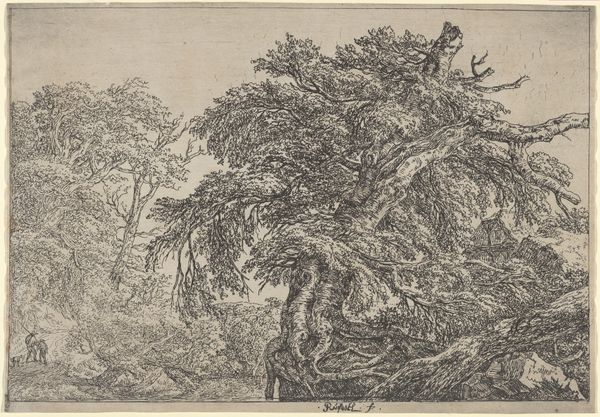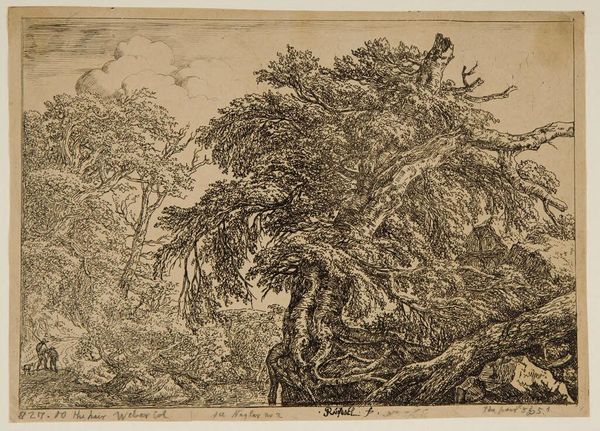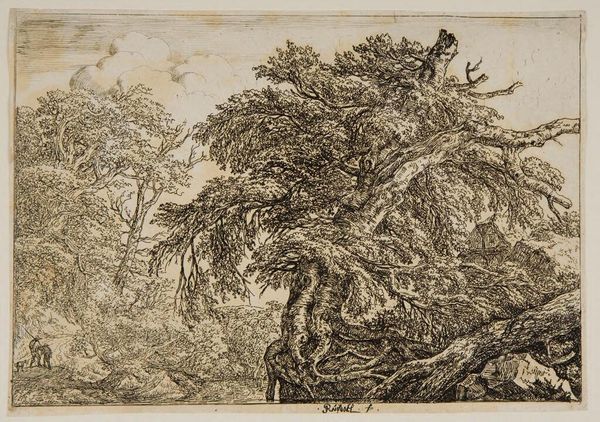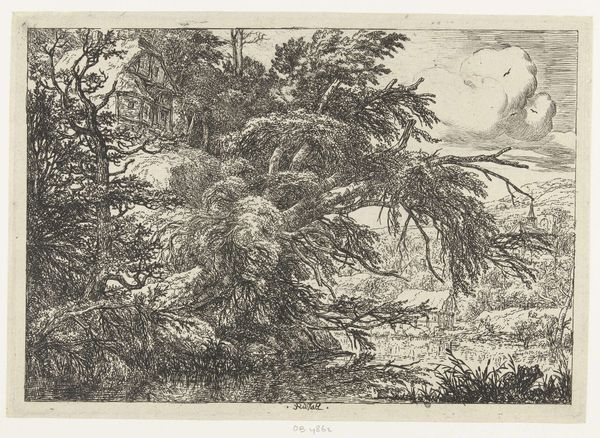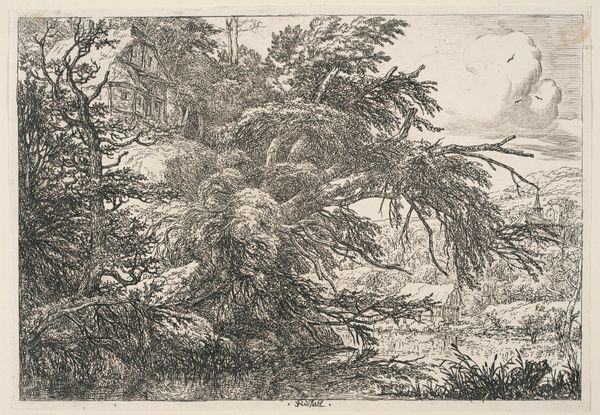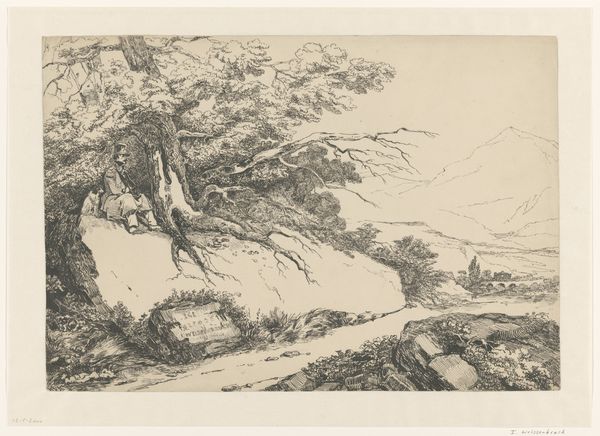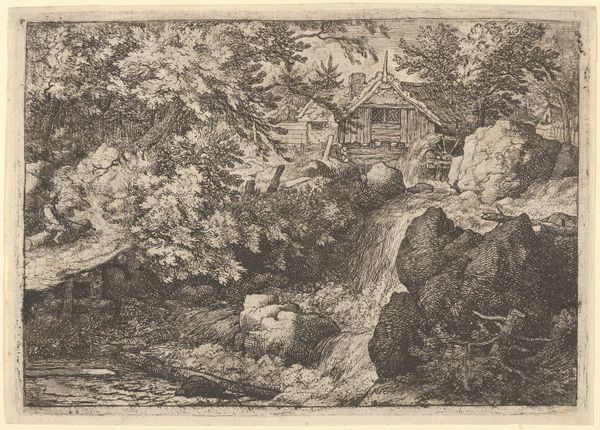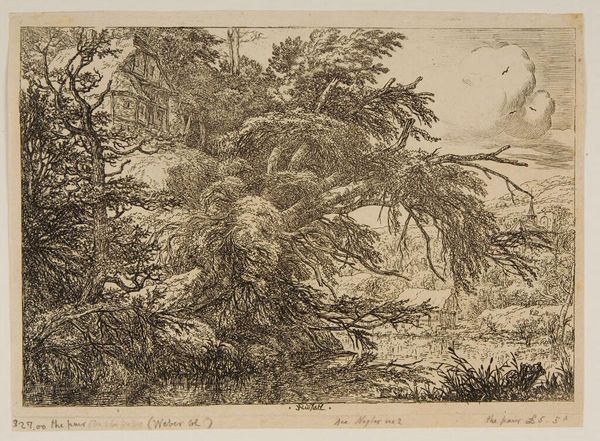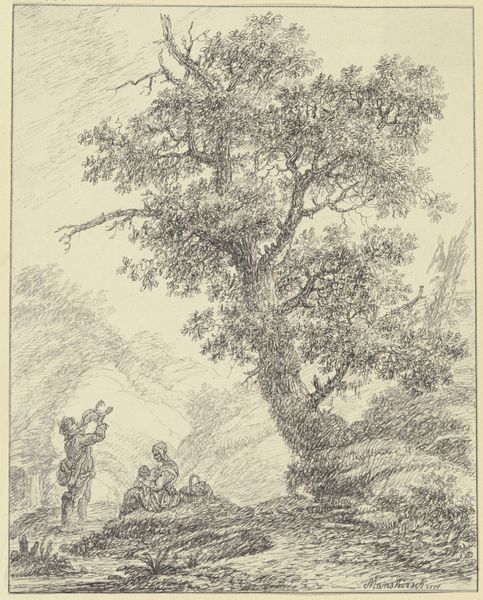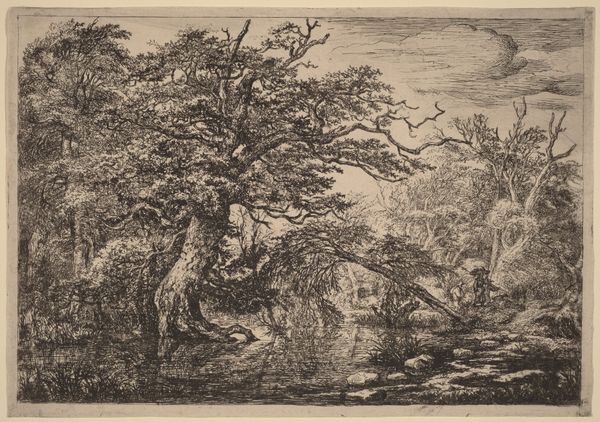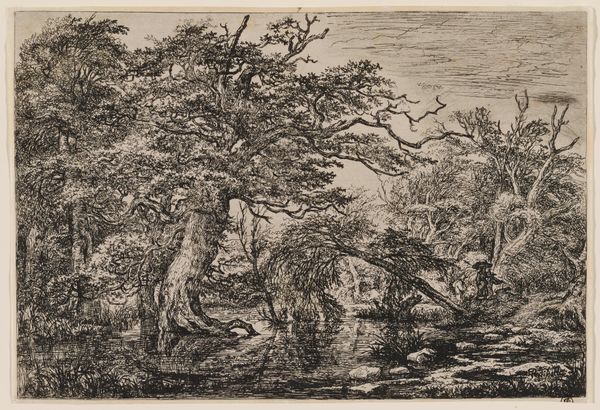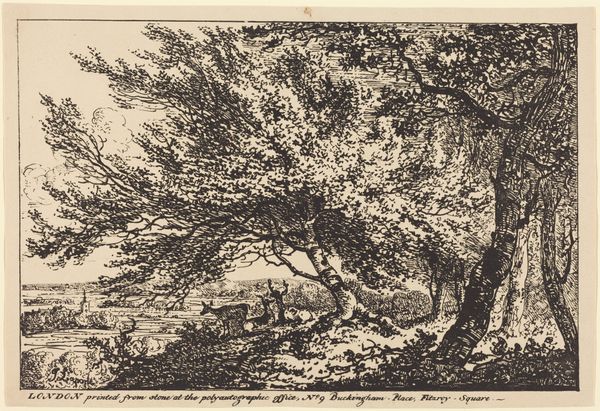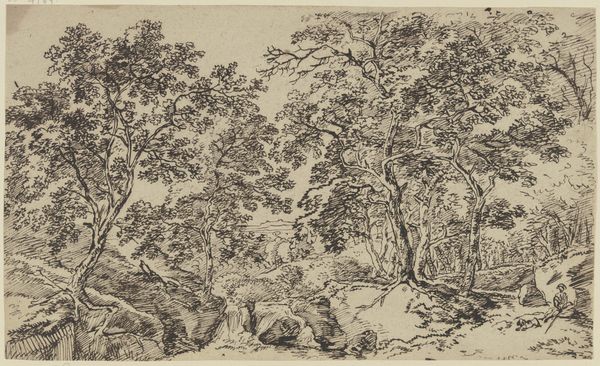
print, etching
#
dutch-golden-age
# print
#
etching
#
landscape
#
realism
Dimensions: 7 11/16 x 11 1/16 in. (19.53 x 28.1 cm) (plate)
Copyright: Public Domain
Curator: What an intense drawing. My eyes just dive into that mass of branches. There’s something almost menacing about it, a kind of stoic defiance. Editor: Absolutely. You're standing before Jacob van Ruisdael's etching, "The Great Beech Tree," dating back to around 1650 to 1655. Considering the Dutch Golden Age context, its monumentality contrasts sharply with the prevailing images of prosperous merchants and idealized landscapes. Curator: Monumental is the word. I’m struck by how close he gets to the subject. Usually, in landscapes, you have this… removing, scenic overview. But this is visceral. You feel like you're wrestling with this ancient tree, feeling every knot. Editor: I agree. And those exposed roots clutching the earth! It evokes themes of resilience but also vulnerability. One could argue the “great tree” reflects the Netherlands' own struggle for autonomy. Emerging from Spanish rule, their “roots” were constantly being challenged. Consider the artist's intentional depiction of that broken, lopped off branch, a deliberate symbolic gesture. Curator: A sort of…scar? Maybe it’s projecting my own feelings about the environment, but this almost feels like it foreshadows some loss. Like a beautiful scream suppressed in monochrome. I mean, the intricacy is lovely—the tiny lines all pointing in slightly different directions create this shimmering vitality—but… still. Editor: Absolutely. There is this sense of urgency and change in relation to natural imagery throughout this period. Keep in mind that forests played strategic, economic roles in naval strength, implicating an array of global networks connected to this natural entity and artistic landscape, shifting away from just the idea of neutral backdrop or Arcadian scene. Curator: It does feel as if the tree is presented to the viewer with that context… a sense of place, a purpose, and maybe… that the glory of it is fleeting. That maybe these moments of the natural world must be seen, noted, honored. Because there may not be an endless supply. Editor: The weight given to natural forms reflects deep-seated cultural anxieties. Curator: Well, thanks for connecting that. My response was purely intuitive, so… that framework is useful in solidifying these sentiments. Editor: Always a pleasure, and it reminds us that the conversations art provokes are meant to be varied and continue over time.
Comments
minneapolisinstituteofart almost 2 years ago
⋮
Realizing the growing appeal foreign landscapes had for collectors, the famous landscape painter Jacob van Ruisdael set out for the rugged German border country around 1650 in search of inspiration. This etching, one of only thirteen he completed, grew out of that trip. Full of personality, the exaggerated tree clinging tenaciously to the bank shows itself to be a survivor, as well as a symbol of transience amid the relentless cycle of growth and decay. Like the pair of dwarfed travelers, we are meant to contemplate life's impermanence and the heroic power of untamed nature.
Join the conversation
Join millions of artists and users on Artera today and experience the ultimate creative platform.
